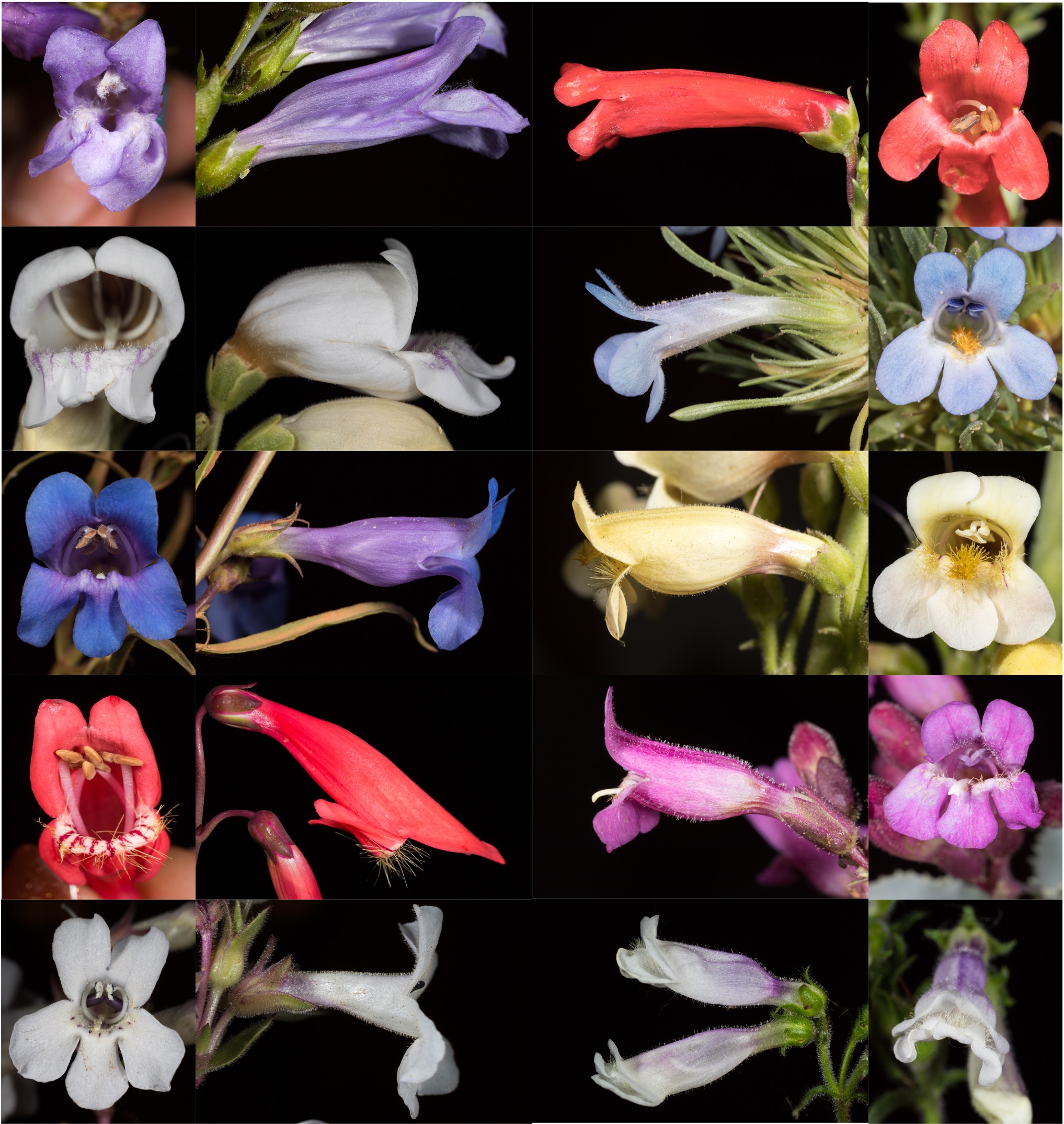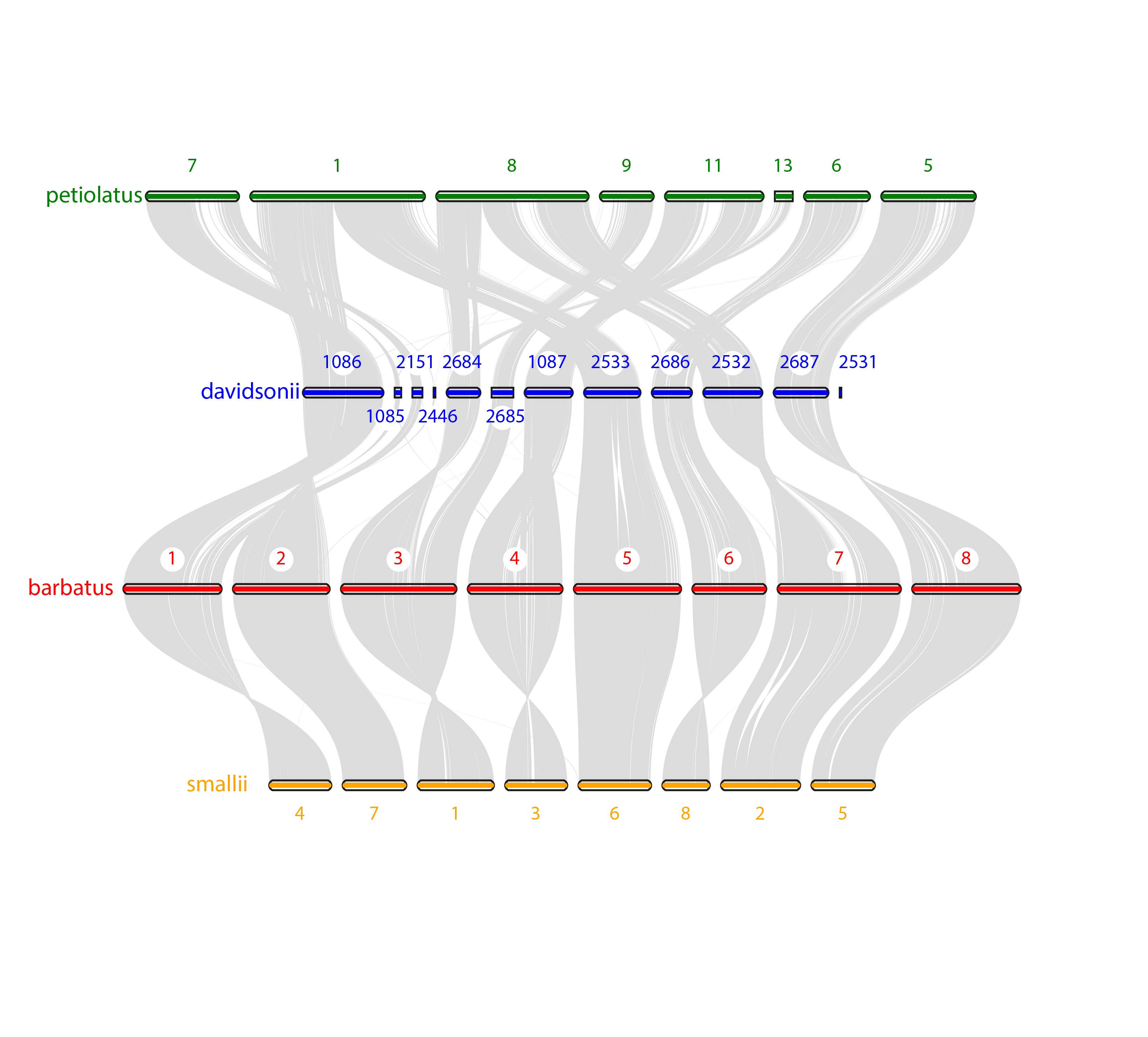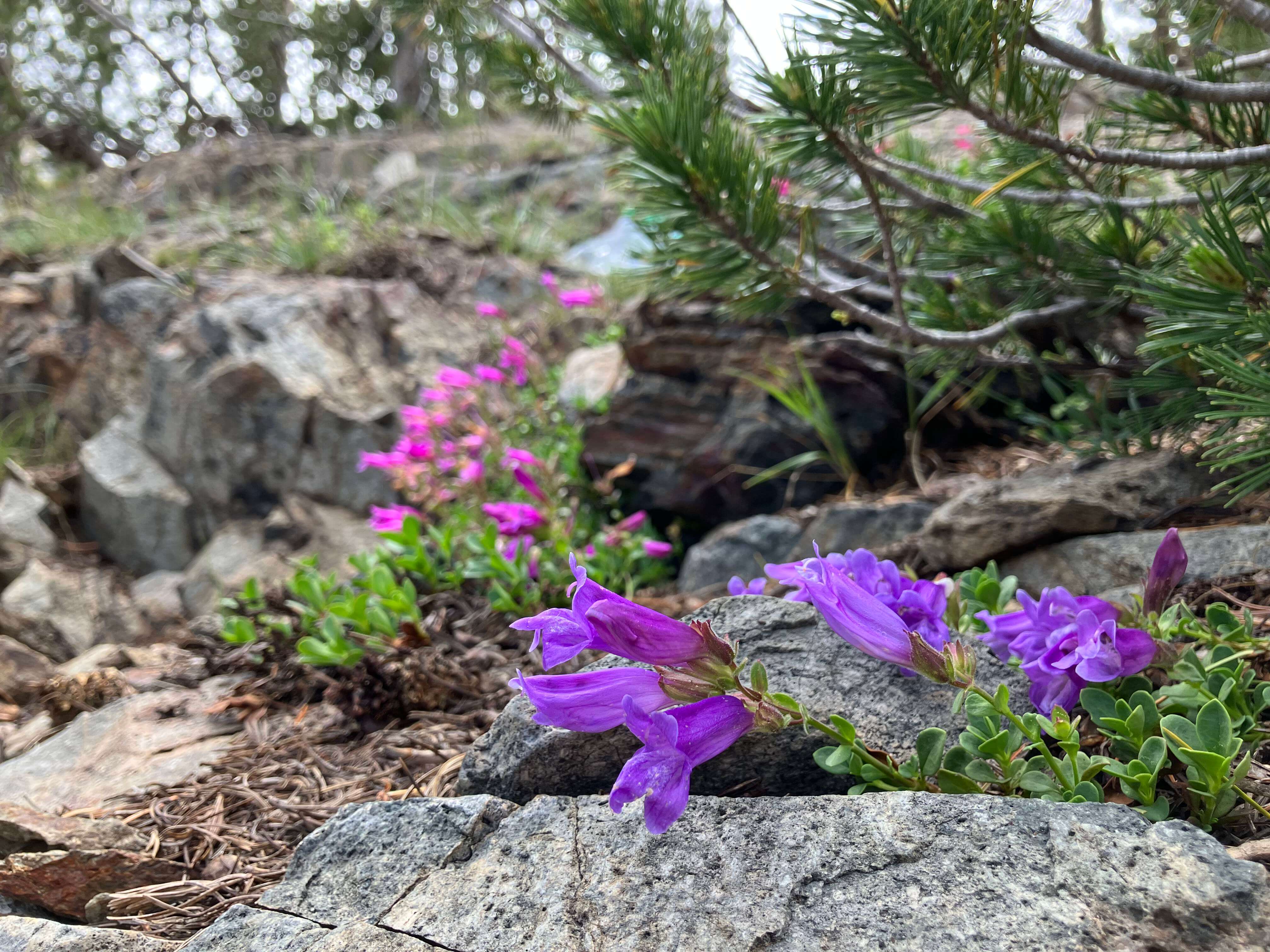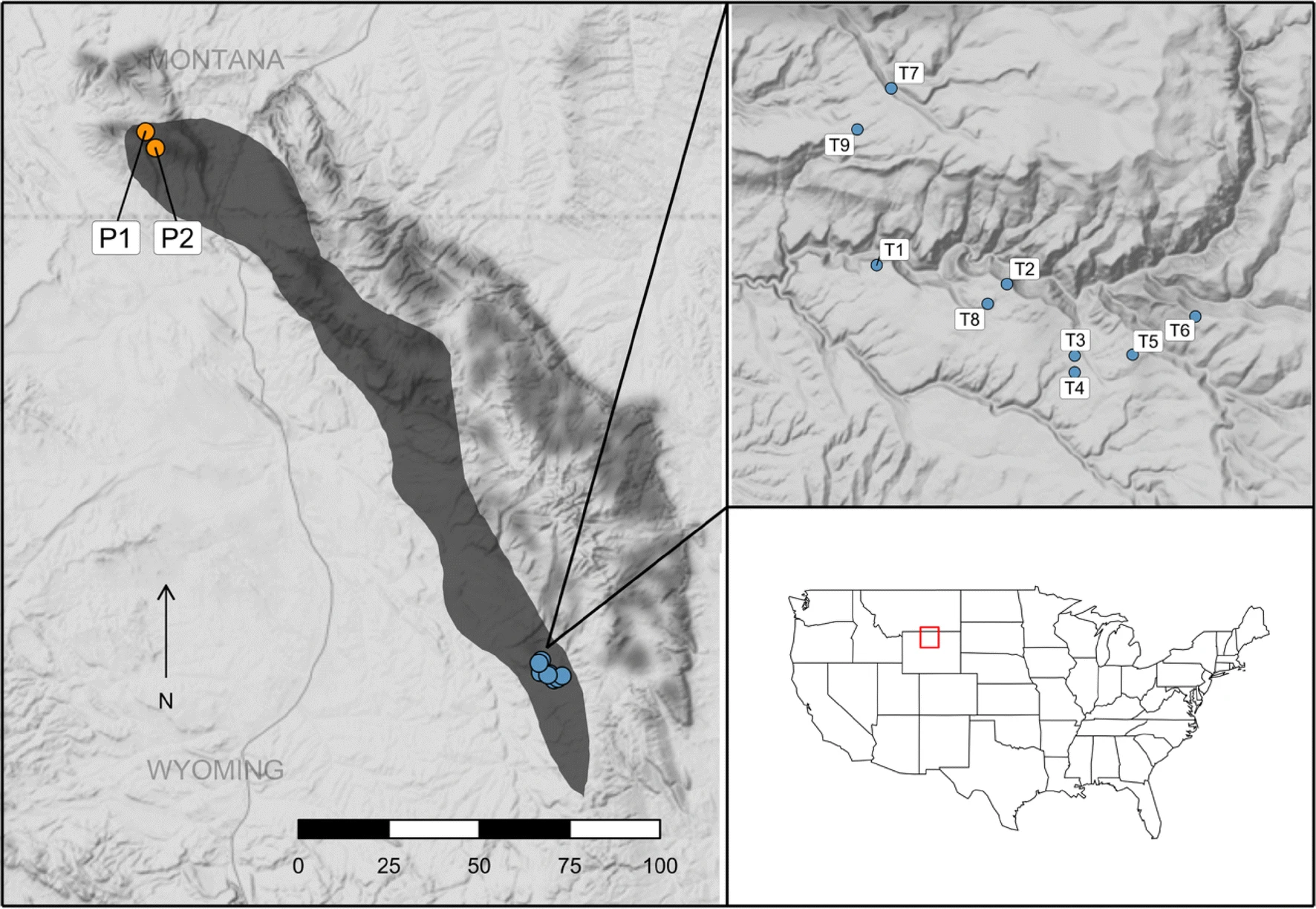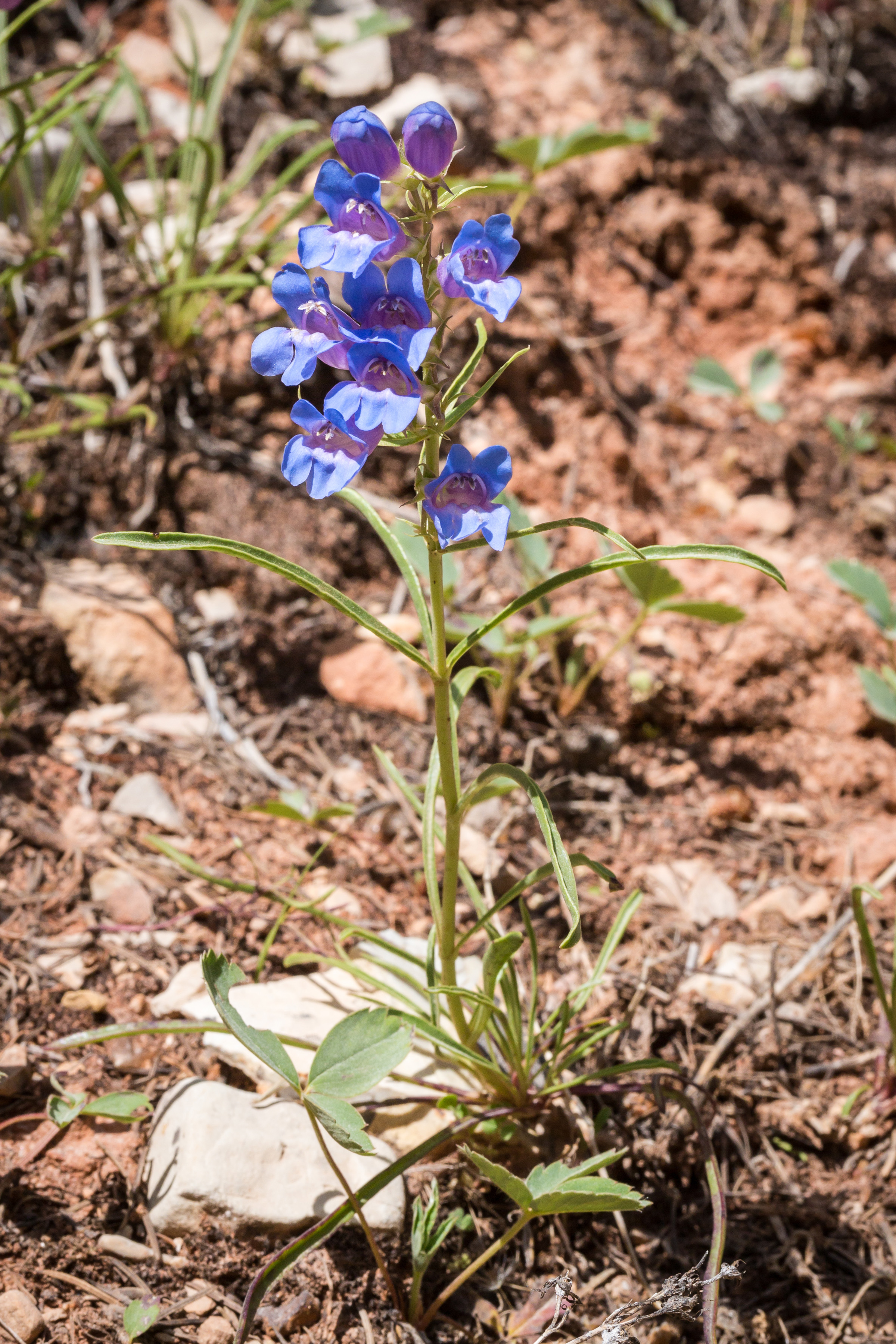We aim to understand the evolutionary origins and genetic architecture of phenotypic and ecological variation, primarily in the emerging model plant genus Penstemon. We use genomic, phenotypic, and ecological data generated from in situ populations and experimental approaches to answer questions about adaptation, speciation, convergent evolution, and species’ responses to environmental change.
Genomics in a rapid continental adaptive radiation
Penstemon serves as an exceptional emerging model system to explore key evolutionary questions through diverse approaches including phylogenomics, population genomics, and comparative approaches.
Penstemon is the largest angiosperm genus endemic to North America and exhibits an incredible array of phenotypic and ecological diversity across its nearly 300 described species. Floral diversity is considered a key axis of adaptive variation, where repeated evolutionary transitions are common; there are an estimated >20 independent transitions from bee pollination to hummingbird pollination. Many species have also appear to have adapted to specific substrates and habitats, such as sand dunes, limestone, and talus/shale/scree. We aim to leverage genomic resources alongside phenotypic and ecological data to unravel the evolutionary and genetic mechanisms underpinning this remarkable adaptive radiation.
Hybrid Zones: natural laboratories
The recency of the Penstemon radiation has resulted in many incomplete barriers to reproduction, and hybrid zones between closely related species form frequently. We leverage these naturally phenotypically and genetically mixed populations to identify genomic regions underlying traits of interest. Our most recent projects investigate hybrid zones that form between shrubby Penstemons (subgenus Dasanthera) with divergent pollination syndromes (bee vs. hummingbird).
Phylogeography and conservation genetics
Many Penstemon species are of conservation concern for state and federal agencies and are threatened by climate change. The broad geographic distribution of Penstemon species across diverse ecosystems coupled with the propensity of its species toward narrow endemism and habitat specialization makes it an interesting group in which to study species’ responses to environmental change from both phylogeographic and conservation perspectives.
